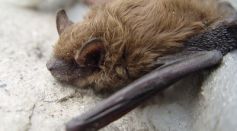ENVIRONMENT & CLIMATE

Ocean Cleanup’s Interceptor to Clean 1,000 Rivers in 5 Years

Imaging the Wonderful Canadian Arctic Archipelago

Utah Hit by Magnitude 5.7 Earthquake, Strongest Since 1992

How the Heavy Rains of Hurricane Maria Shattered the Forests of Puerto Rico

Changing Attitudes Towards Meeting the Wildfire Challenge Daniel B. Botkin and Lisa Micheli

[VIDEO] Penguins Take Advantage of Human Absence, Roam Freely Around Aquarium

Plants’ Use of Hormone Can Help Fight Insect Attacks and Fungi

The Future of Reducing Air Pollution in Aerospace

Rising Sea Levels Make Storm Surges Worse

Species and Spaces are Said to be Disappearing: A Growing Threat to Conservation
Air Pollution in Italy Drops Dramatically During Coronavirus Outbreak

Deadly Fungal Disease Causes Death of Millions of Bats in Texas

Rare White Giraffes Killed in Kenya by Poachers

Top 3 Picks: New Global Warming Documentaries
Most Popular

3I/ATLAS: The Truth Behind the Mysterious Interstellar Object Now Targeted by NASA and UN Teams

Hellfire Missile Video Reveals MQ-9 Reapers Being Used for Aerial Combat

Nvidia's Jetson Thor Could Make Humanoids Smarter Than Ever

Cyber Attack on Jaguar and Land Rover Cripples UK Operations: 1 October Earliest Restart as Deliveries Disrupted Worldwide





